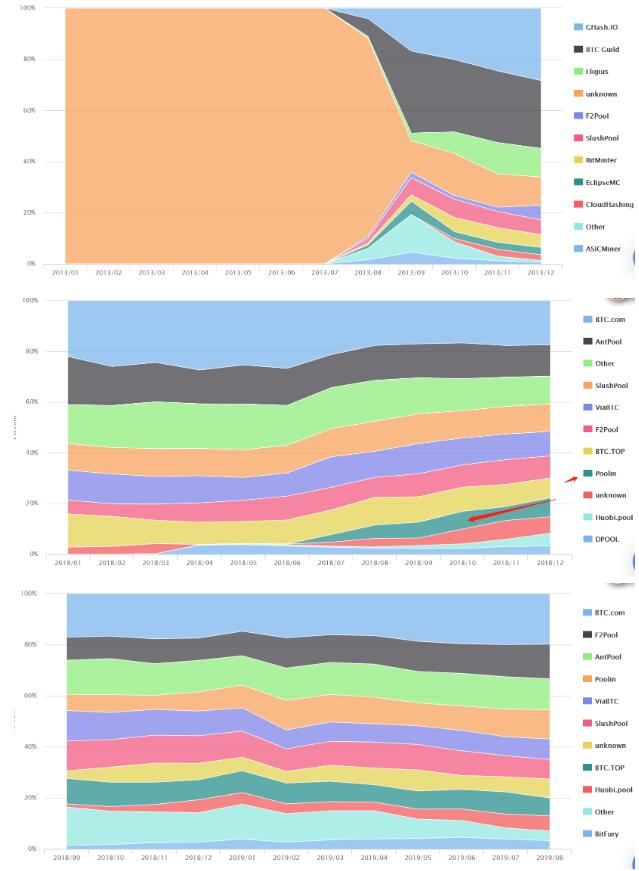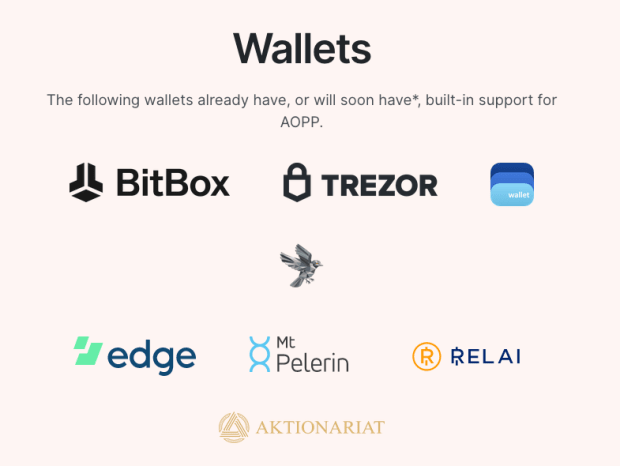Why Insurance Companies Need Bitcoin
In a time of monetary inflation, the only place to pool funds for insurance companies is bitcoin.
Everyone Loves Insurance, Right?
Healthcare and insurance. The words just evoke anguish, discomfort and general anxiety, don’t they? I mean, I sure as hell don’t enjoy hearing those words uttered, let alone ponder the costs that are forked over every month from my salary. Yet they are still an integral part of our lives in the developed world. And, in case you haven’t noticed, the premiums are ridiculous — and getting worse. But why?
Let’s do a basic run down.
Insurance companies turn a profit by promising to cover the costs of a damaging event in exchange for a monthly cost, also known as a premium. This premium gets collected into a pool of funds that is contributed to by the clients — the premium payers — of the insurer, at which point funds get distributed, as needed, to cover the obligations of the insurer. Now, you can imagine that at some point this pool of funds may get so large that the insurer would be wise to allocate a percentage of the pool towards investment vehicles to earn a yield on the pool’s cash. If they don’t grow their funds through investment, they’re just losing purchasing power via monetary inflation. In that case they may as well be Pablo Escobar and have some of their cash literally eaten by rats.
Now, the nature of insurance is, basically, identifying and managing risk and exposure while diversifying cash flows to compensate for any fluctuations in macroeconomic outlooks. The desired outcome, of course, is to be as minimally exposed to risk as possible so they can survive unexpected shocks (like a global pandemic leading to a complete economic shutdown that developed over the matter of three to four months). They must manage this all while still putting capital to work. This risk-diminishment strategy also includes the risks that come along with investment and capital allocation. This necessarily includes monetary debasement via inflation.
Because of this, Treasuries are a popular vehicle due to their lack of risk (albeit implied lack of risk) and they’re guaranteed an interest rate yield on the capital allocated. This yield represents capital earned by taking on the risk of forking over cash to the Treasury Department for disbursement. The issue, especially lately, is that Treasuries (this includes bills, notes and bonds) lose their strategic value when inflation is outpacing their yield. In that kind of landscape it makes more sense to have capital allocated to assets that are scarce and desirable — assets that are somewhat insulated from the manipulations and tribulations associated with human-led governments and organizations.
Thanks to this relationship, the insurance sector is being squeezed from multiple angles. A review by Deloitte back in December 2020 identifies the various streams of stress on the industry. 2020 brought an incredible amount of stress onto the insurance sector that was unlike anything in our lifetime..
Firstly, there were plenty of medical expenses due to COVID-19. Then there were the riots that came with the outrage of the George Floyd event that resulted in widespread damage to homes, storefronts and private property. Insurers surely had their hands full.
Secondly, due to both of these historic events, the United States government and the Federal Reserve decided to provide assistance to the citizens and companies of the country by providing stimulus packages. This massive injection of money involved not only Small Business Administration (SBA) loans and loans to top corporations but also grants to the public in order to cover the income lost due to the mandated, country-wide lockdowns.
While this was a godsend to many citizens, it has also led to some problems. In order to facilitate the necessity of easy credit to keep the flywheel that is our fiat economy going, the Federal Reserve lowered interest rates on loans — effectively to zero. This made home loans cheap, auto loans cheap, credit cards cheap. It made all credit cheap. This also affects Treasuries. And Treasuries, let’s remember, are a very important part of an insurer’s investment strategy. When interest rates are at zero, companies and individuals are forced further away from these safe investment havens in order to protect their capital from inflation. They must take on more risk just to achieve break-even returns against inflation. This is a process referred to being forced further out onto the Risk Curve.
If we turn our gaze to health insurance, premiums have absolutely rocketed over the last few decades. I want to provide a few words from Steven Brill from his book, “Tailspin”:
“What is not as widely appreciated is that the cost to employers of hiring workers has risen by at least 30 percent in inflation-adjusted dollars because their health insurance costs per employee have increased by more than 300 percent. Had health care costs merely kept pace with inflation, employers could have had that much more to pay their workers in wages.”
Are you flipping kidding me?! Three hundred percent. If that quote doesn’t make your jaw drop as an employee and cause your employer to just absolutely laugh out loud, then you’re completely clueless. Employers literally can’t afford to pay employees their just rewards! Here’s another example:
“From 1980 to 2016, personal, out-of-pocket spending for health care (in deductibles and co-pays for costs covered by insurance, and in employees’ shares of premiums for employer-provided health insurance) grew 460 percent. ”
Four-hundred… and sixty percent.
COO-HOO.
My Wallet Hurts, And So Does My Body
We’re all paying hand-over-fist for insurance. Why is this?
Well, if we start by drawing on the very basic and elementary breakdown I laid before you earlier, I think we can paint the ugly mosaic.
Time for a short example:
So, let’s say that 100 individuals are paying into a health insurance product pool. And let’s say that five of these individuals come down with a serious illness that is a significant financial burden, draining funds from the pool. How does the insurer continue to meet these expensive obligations while also protecting the future possible obligations they might owe to other customers? The insurer raises premiums, either for the individual or for all customers.
That’s a very, very basic breakdown. Yet I believe it should give pause to many that may be attempting to blame the insurers for the reality that we find ourselves in. Next question is: what’s causing the premiums to be so high?
Well, let’s see. According to a meta-analysis published by the NIH in February 2020, 78% of Americans will be considered overweight, if not obese, by the year 2030. And globally the number of depression cases from 1990 to 2017 increased 50%. This is terrifying, as there have been reports from the CDC that depression rates spiked heavily during the lockdowns of 2020, claiming that depression rates amongst American adults spiked up 40%. Furthermore, this study published in September 2020 projects that global diabetes cases will increase by 10% in the coming decade. Just over 10% of Americans are already diabetic — roughly 34 million — and that number is climbing by the day.
And then according to some estimates, 37 million Americans are prescribed antidepressants.
Those all imply a lot of consistent healthcare costs, considering that so many of the “solutions” offered by providers are a big pharma products.
You wondered why health insurance premiums are so high? And why more employers can’t afford to provide their employees the wages they deserve? I think we know why.
Remember in the preceding article where I talked about how corporate lobbying may be causing serious ramifications for public health? And you want to go ahead and add that mix of issues with the ones we just discussed above? So there’s a huge weight on health insurance and employment insurance. Then you add in this little tidbit from Investopedia:
“It is common for insurers to be involved in one or more distinct insurance businesses, such as life, property, and casualty insurance. Depending on the degree of diversification, insurance companies face different risks and returns, making their P/E and P/B ratios different across the sector.”
So, 2020 experienced a series of unfortunate events that have caused every insurer to feel heavily weighed-down. What’s the solution?
A Simple Solution
“For every problem there is a solution that is simple, neat, and wrong.” – H.L. Mencken
While those words may ring true for some problems, I prefer to lean on the words and thoughts of an individual who, in contrary to Mr. Mencken, saw the value in simple solutions;
“When you first start off trying to solve a problem, the first solutions you come up with are very complex, and most people stop there. But if you keep going, and live with the problem and peel more layers of the onion off, you can often times arrive at some very elegant and simple solutions.” – Steve Jobs
My solution is really more of an assist. It is by the same vehicle I have mentioned in my previous article, but for a completely different reason. Bitcoin.
Insurers should add bitcoin to their balance sheet as fast as possible. Not only is it an inflation hedge for many investors, but it is also a source of significant alpha considering the scope of bitcoin’s current adoption numbers as well as bitcoin’s magnetism for the greatest minds on the planet. Insurers would not only be protecting a portion of their balance sheet by buying bitcoin, but would stand to gain both valuation increases as well as increasing the quality of their workforce. Our insurers will have to employ bitcoin-experienced staff to assist them with educating current staff on how bitcoin operates and then building out the infrastructure to custody the asset. They’ll also need experienced bitcoin traders to help maintain their company’s exposure within the bounds laid out in their prospectuses. Trading a market that is literally open 24/7 that has no circuit breakers is a very different animal.
It’s not flashy. It’s not complicated. It’s a very simple solution.
This solution is not free of the effects of fear that will keep leading to cycles of irrational behavior, both in people and in financial markets as a whole. So discretion and humility are paramount. Don’t stack more than you’re capable of weathering in extreme market events.
Hodl bitcoin. Stack your sats. Protect your keys.
Take your future back.
(Next I think we’ll look at how our current zombie plague is affecting not only investment strategies but innovation as well. If you enjoy my takes, make sure to follow @bitcoinmagazine so you don’t miss what I have to say next.)
This is a guest post by Mike Hobart. Opinions expressed are entirely their own and do not necessarily reflect those of BTC, Inc. or Bitcoin Magazine.









